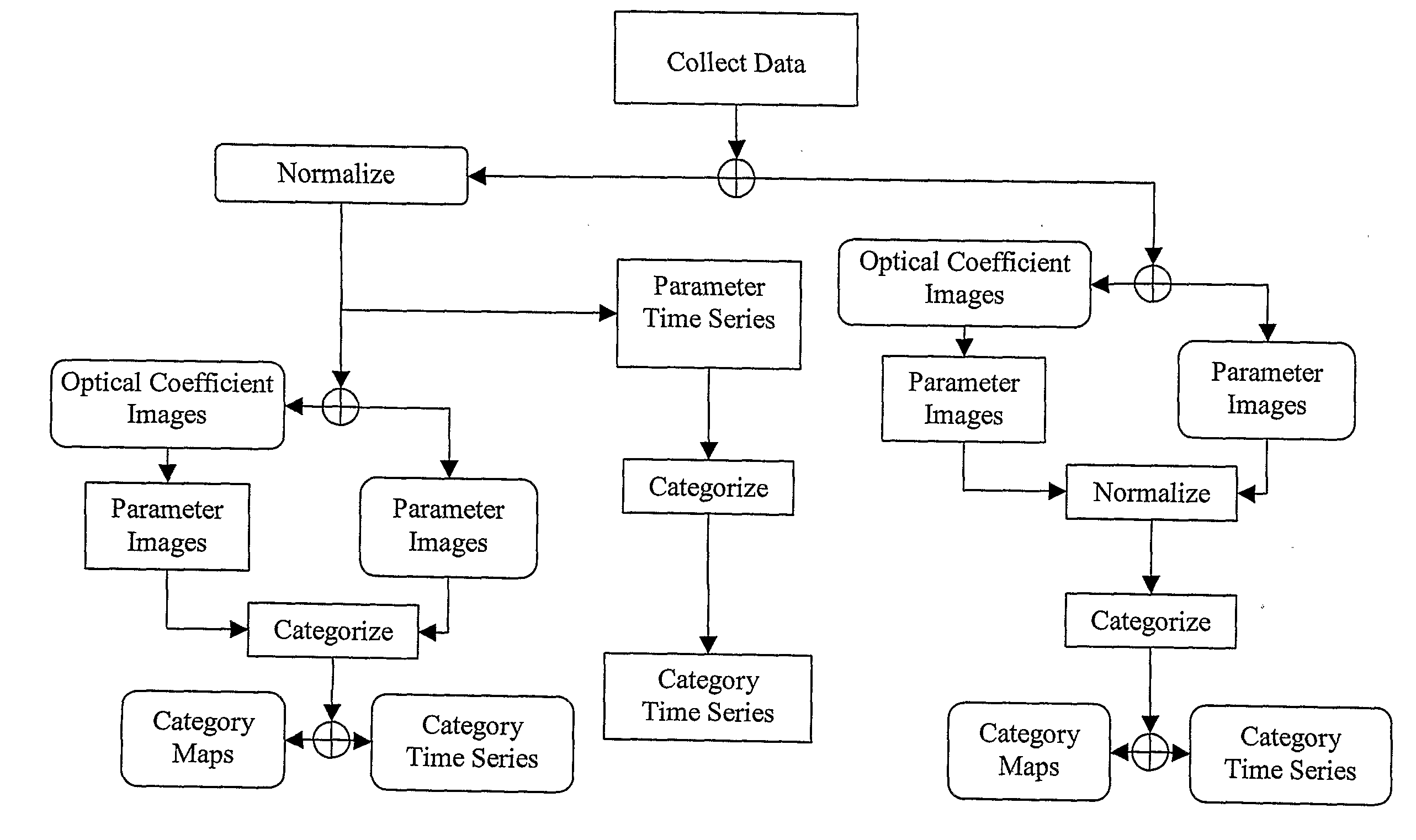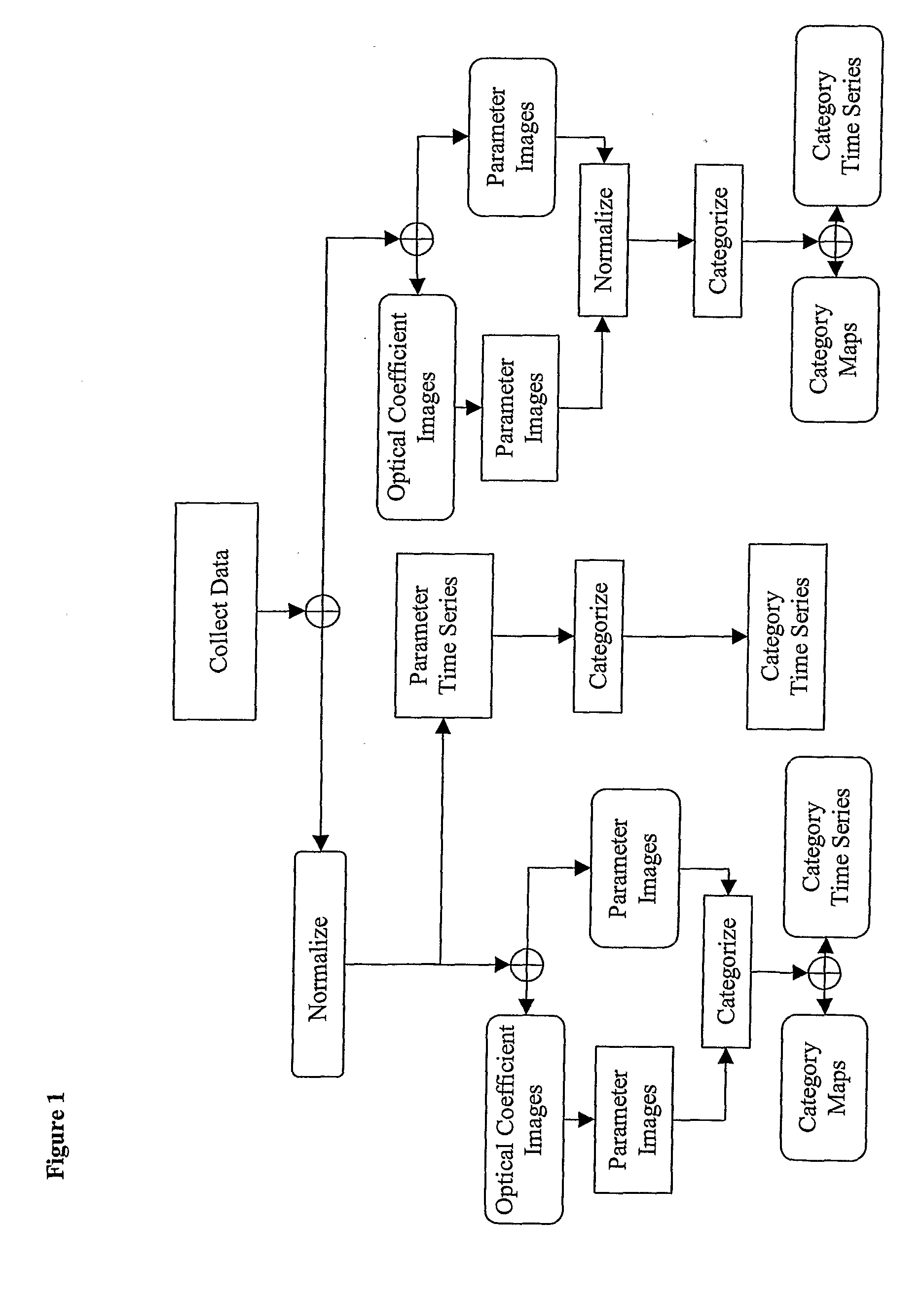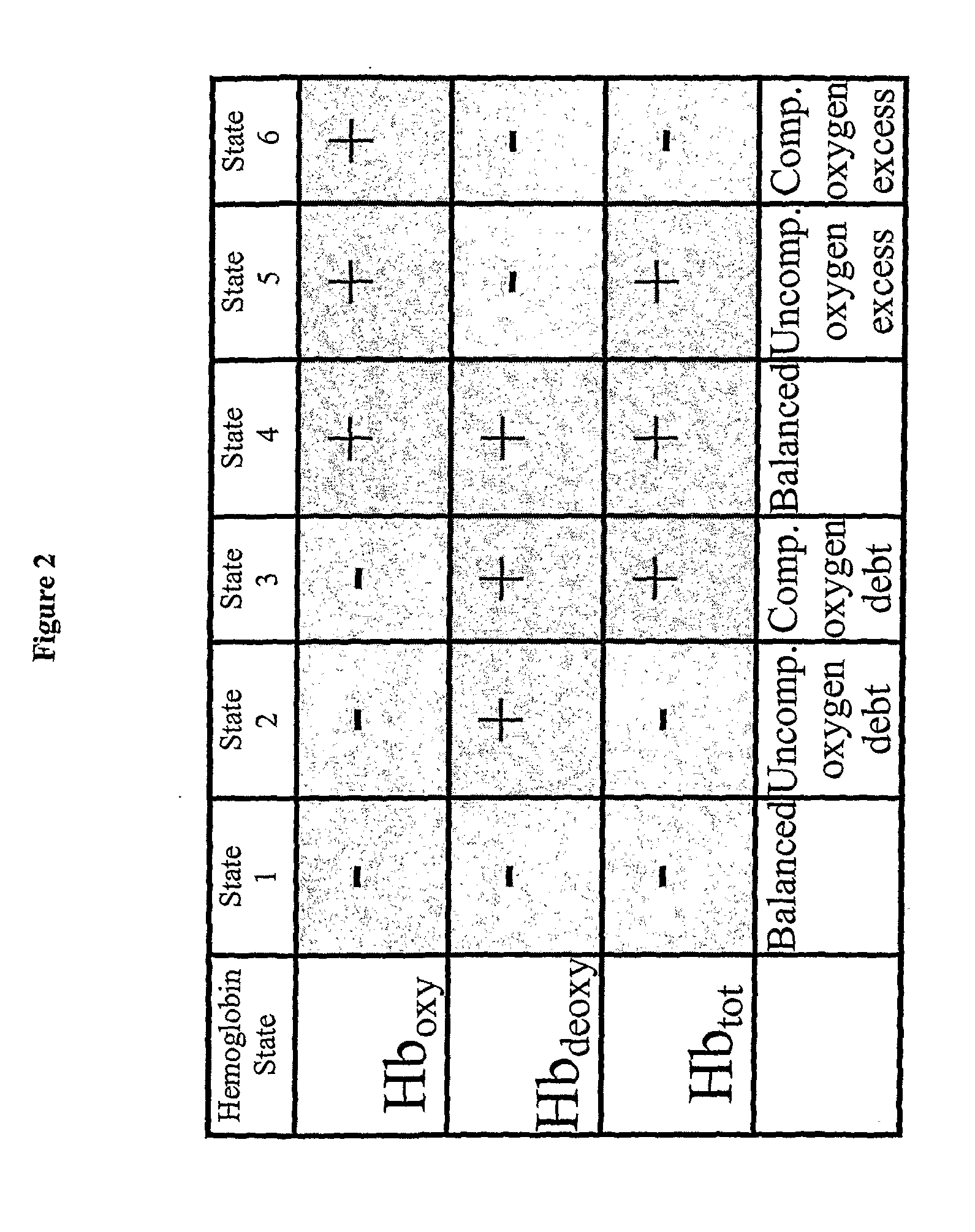Functional imaging of autoregulation
a functional imaging and autoregulation technology, applied in the field of functional imaging of autoregulation, can solve the problems of poor blood pressure control, metabolic disturbance, orthostatic intolerance,
- Summary
- Abstract
- Description
- Claims
- Application Information
AI Technical Summary
Problems solved by technology
Method used
Image
Examples
experiment 1
[0064]Method: A human forearm is used as the subject body to study the tissue metabolism of hemoglobin in response to a 60 mm Hg pressure cuff inflation (mild hypoxia) for two (2) minutes and in response to a similar maneuver, but at 180 mm Hg pressure to produce ischemia. The method of Functional Imaging of Autoregulation (FIA) is used to describe the detailed variation of different states of hemoglobin during the cycle of autoregulation.
experiment 2
[0065]The head of a rat is used as the subject body to study tissue metabolism of hemoglobin. In this experiment a tether of optical fibers were attached to a head stage allowing the animal to move freely. The method of Functional Imaging of Autoregulation (FIA) is used to describe the detailed variation of different states of hemoglobin for a single time point.
[0066]Instrument: Data was acquired at 2.4 Hz for a period of 5-6 minutes using a DYNOT 232 imager (NIRx Medical Technologies) and includes the both provocation and recovery time. The time-series tomographic data sets were acquired using two (2) illuminating wavelengths (760, 830 nm).
[0067]Results:
[0068]FIG. 3 shows the results for each of the eighteen (18) hemoglobin fractions corresponding to the six (6) different autoregulatory states shown in FIG. 1, (panels 1-18), were computed for the mild hypoxia experiment. These were determined by first computing the image time-series associated with each of these sub states, followe...
PUM
 Login to View More
Login to View More Abstract
Description
Claims
Application Information
 Login to View More
Login to View More - R&D
- Intellectual Property
- Life Sciences
- Materials
- Tech Scout
- Unparalleled Data Quality
- Higher Quality Content
- 60% Fewer Hallucinations
Browse by: Latest US Patents, China's latest patents, Technical Efficacy Thesaurus, Application Domain, Technology Topic, Popular Technical Reports.
© 2025 PatSnap. All rights reserved.Legal|Privacy policy|Modern Slavery Act Transparency Statement|Sitemap|About US| Contact US: help@patsnap.com



